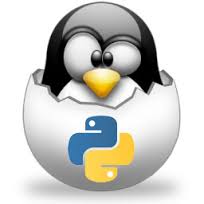 |
CS 3723 Programming Languages |
2. Lisp Lists | |
- Problem 2.1: Try out the expressions below in sequence
on the interpreter. (Think about them carefully as you go.
This is for practice, so you should not turn this in.)
car, cdr, cons > (setq x '(a b)) > (setq y '(a b c)) > (car x) > (car y) > (cdr x) > (cdr y) > (car (cdr x)) > (car (cdr y)) > (cadr x) > (cadr y) > (cons x y) > (append x y) > (cons (car y) (cdr y))
append and list > (list 'a 'b 'c) > (list 'a '(b c) 'd) > (append '(a b) '(c d) '(e f)) > (setq l '(a b)) > (append l l) > (append l l l) > (list l l) > (list l l l) > (list 'l l) > (append 'l l) ;;; an error > (append '(a) '() '(b) '()) > (append '((a) (b)) '((c)(d))) > (list '((a)(b)) '((c)(d))) > (cons l l) > (cons 'l l) > (length '(a (b c) d)) > (reverse '(a (b c) d)) > (car '(cdr '(a b c))) > (car (cdr '(a b c))) > (cons 'a nil) > (setq x '(a b)) > (cons (car x) (cons (cadr x) '(c d)))
- Problem 2.2:
Write a recursive function maxvec that finds the maximum
of a simple list of numbers.
[Hint: if the cdr is nil,
just return the car, and otherwise return the maximum
of the car
and of maxvec applied to the cdr.
For example,
-
(maxvec '(2 5 6 3))
- Problem 2.3:
Define a function count-atoms that will count
the number of atoms in a list, at all levels.
For example
-
(count-atoms '(a (b c) (d (e) f)))
- Problem 2.4:
Write a function vecmul that will take as inputs
two simple lists of numbers. vecmul
should multiply these lists coordinate-wise as one would multiply vectors.
Assume the two lists are the same length. [For
example,
-
(vecmul '(2 3 4 5) '(1 4 5 2))
- Problem 2.5:
Use the following addvec function
(already given in lisp_functions
under the name add)
addvec in Lisp (defun addvec (list) (cond ((null list) 0) (t (+ (car list) (addvec (cdr list)))) ))-
(innprod '(1 2 3) '(7 8 9))
- Problem 2.6:
Write a function insert1 which takes its first integer argument and inserts it at the correct
place in its second argument, a list of integers sorted in increasing order, so
that
-
(insert1 3 '(1 4 6 6 7))
- Problem 2.7:
Use insert1 to write a function sort1
which sorts a list of integers into increasing order.
[We are done if the list is nil.
Otherwise insert the car of the list
into the sorted cdr.]
- Problem 2.8: Try out the function reverse in Lisp:
reverse in Lisp > (reverse '(a b c)) > (reverse '((a b c))) > (reverse '(a (b c d) e))
- Problem 2.9: Write a ``super'' reverse function
srev which reverses all lists that occur in an S-expression
at any level. Thus
-
(srev '((a b (c d)) e (f g)))
- Problem 2.10: Give the result of each of the following:
mapcar and apply > (mapcar '1+ '(1 2 3)) > (mapcar '+ '(1 2 3) '(8 10 12)) > (mapcar '* '(1 2 3) '(8 10 12)) > (mapcar 'car '((a b c) (x y z) (r s t))) > (mapcar 'cdr '((a b c) (x y z) (r s t))) > (apply '+ '(2 4 6 8)) > (apply '* '(1 2 3 4 5)) > (apply 'list '(a b c d))
- Problem 2.11: [Very short code for each of the three below.]
- Use apply to define addvec above.
- Use mapcar to define vecmul above.
- Give code for the function innprod (see 10.6 above) that uses only apply and mapcar
- Use apply to define addvec above.
- Problem 2.12:
- Give the internal lisp representation for the S-expression: ( (a b) c (d) ). [This should involve lisp cells that each have a car and a cdr pointer. You will need to draw some kind of diagram, perhaps similar to the diagrams in the link above.]
- What does the dotted expression ( (a . (b . nil) ) . (c . ( (d . nil) . nil) ) ) represent as a normal S-expression (without dots). [There is a trivial way to solve this.]